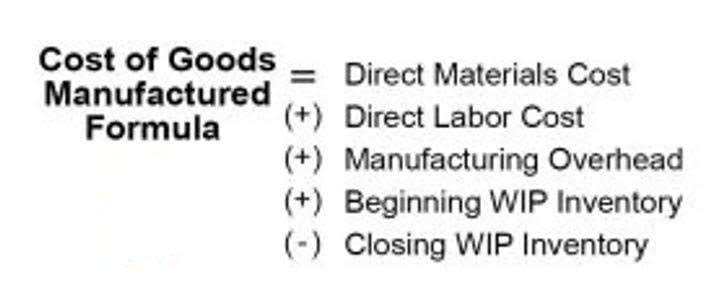While revenues and expenses in accounting records are reset to zero at the conclusion of a period, they are reported in the income statement to reflect profitability for the time. An income statement is a list of all revenue and expense accounts classified according to the type of revenue and expense. At the end of an accounting period, the account of income summary is utilized for closing-entry recording. Account balances of income-statement accounts, specifically revenues and costs, are closed and reset to zero at the end of an accounting period to prepare them for transaction recording in the next month.
Step 3 of 3
- The single-step format is useful for getting a snapshot of your company’s profitability, and not much else, which is why it’s not as common as the multi-step income statement.
- As the tables show, this business made a profit during the accounting period.
- However, EBITDA can be calculated using the information from the income statement.
- Temporary account balances can be shifted directly to the retained earnings account or an intermediate account known as the income summary account.
- Once the temporary accounts are closed to the income summary account, the balances are held there until final closing entries are made.
This figure is then moved to the retained earnings account on the balance sheet, updating the cumulative record of the company’s financial performance over time. Its primary purpose is to facilitate the closing of these temporary accounts and prepare the books for the next accounting cycle. The income and expense accounts can also be subdivided to calculate gross profit and the income or loss from operations. These two calculations are best shown on a multi-step income statement. Gross profit is calculated by subtracting cost of goods sold from net sales. Operating income is calculated by subtracting operating expenses from the gross profit.
Gross profit
In the multi-period case, something might also happen to the economy beyond the control of the individual to reduce (or increase) the flow of income. Changing measured income and its relation to consumption over time might be modeled accordingly, such as in the permanent income hypothesis. COGS only involves direct expenses like raw materials, labor and shipping costs.
- An Income Statement is a financial statement that shows the revenues and expenses of a company over a specific accounting period.
- Similarly, transferring expenses off the income statement necessitates crediting all expense accounts for the whole amount of expenses incurred during the period and debiting the income summary account.
- This means that it is not an asset, liability, stockholders’ equity, revenue, or expense account.
- Operating revenue is realized through a business’ primary activity, such as selling its products.
- Temporary (nominal) accounts are accounts that are closed at the end of each accounting period, and include income statement, dividends, and income summary accounts.
- The company also realized net gains of $2,000 from the sale of an old van, and incurred losses worth $800 for settling a dispute raised by a consumer.
Revenue Section
The net balance of the income summary account is closed to the retained earnings account. The balances in the temporary accounts are retained in the income summary account until final closing entries are completed. Once all temporary accounts have been closed, the balance in the income summary account should equal the company’s net income for the year. The income summary is a fundamental financial tool in accounting that serves as a temporary account with a vital role in the financial closing process. Its primary purpose is to assist in the accurate calculation and transfer of net income or net loss from a specific accounting period to the retained earnings account on the balance sheet. After closing the revenue accounts, the next step in compiling the document is to close all the expense accounts.

Examples of Income Summary Accounting
You might be asking yourself, “is the Income Summary account even necessary? ” Could we just close out revenues and expenses directly into retained earnings and not have this extra temporary account? We could do this, but by having the Income Summary account, you get a balance for net income a second time. This gives you the balance to compare to the income statement, and allows you to double check that all income statement accounts are closed and have correct amounts.
The income summary account is then canceled out and its balance is transferred to the retained earnings (for corporations) or capital accounts (for partnerships). The income summary account has a zero balance for the rest of the year. Similarly, transferring define the income summary account expenses off the income statement necessitates crediting all expense accounts for the whole amount of expenses incurred during the period and debiting the income summary account. For the rest of the year, the income summary account maintains a zero balance.

A line-by-line analysis of an income statement
Net profit, also called “net sales” or “net earnings,” is the total profit for your business. Often shortened to “COGS,” this is how much it cost to produce all of the goods or services you sold to your customers. If the company is a service business, this line item can also be called Cost of Sales. The term can also mean whatever they receive in their paycheck after taxes have been withheld. The term “net” relates to what’s left of a balance after deductions have been made from it. The articles and research support materials available on this site are educational and are not intended to be investment or tax advice.

Notice that the Income Summary account is now zero and is ready for use in the next period. The Retained Earnings account balance is currently a credit of $4,665. Let’s explore each entry in more detail using Printing Plus’s information from Analyzing and Recording Transactions and The Adjustment Process as our example. The Printing Plus adjusted trial balance for January 31, 2019, is presented in Figure 5.4. Operating revenue is realized through a business’ primary activity, such as selling its products. Non-operating revenue comes from ancillary sources such as interest income from capital held in a bank or income from rental of business property.
Free Accounting Courses
Once all the temporary accounts are closed, the balance in the income summary account should be equal to the net income of the company for the year. The income summary account is an account that receives all the temporary accounts of a business upon closing them at the end of every accounting period. This means that the value of each account in the income statement is debited from the temporary accounts and then credited as one value to the income summary account. The income statement, also called the profit and loss statement, is a report that shows the income, expenses, and resulting profits or losses of a company during a specific time period. The closing entry entails debiting income summary and crediting retained earnings when a company’s revenues are greater than its expenses.
Secondary-Activity Expenses
Often confused with income statements, the two are very different and should not be interpreted as being the other. The key similarity is that they both report total nets and losses. Though sometimes confused with income statements, the key difference between the two is that those income summaries are interim, whereas income statements are permanent. Here is an example of how to prepare an income statement from Paul’s adjusted trial balance in our earlier accounting cycle examples. The other two important financial statements are the balance sheet and cash flow statement.
